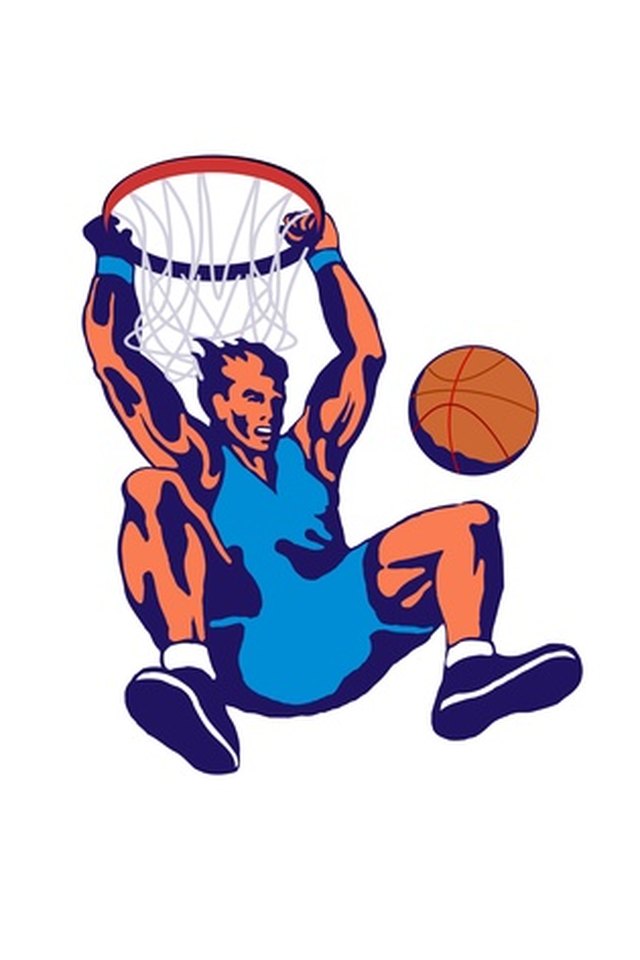Rules Regarding Dunking in IHSAA Basketball

Dunking is considered one of the most exciting plays in the sport of basketball--a chance for players to earn points with awe-inspiring displays of athleticism. A dunk occurs when a player leaps high enough to slam the ball through the hoop 10 feet off the ground. The Indiana High School Athletic Association (IHSAA) followed the National Collegiate Athletic Association (NCAA) in the 1970s and allowed dunking during games. Still, the IHSAA follows specific rules on when and how players can dunk.
Pregame Warm-ups
The IHSAA follows guidelines set out by the National Federation of High School Athletic Associations (NFHS). NFHS rules prohibit basketball players from dunking during pregame warm-ups. If a player does dunk during warm-ups, the team’s coach is assessed a technical foul. Coaches and players can be ejected from a game after acquiring two technical fouls.
Dunking During Games
The IHSAA allows players to dunk during games but draws a hard line on dunking while the clock is stopped or there is a break in the action. If there has been a stoppage in play or a timeout called and a player dunks, the referee can call a technical foul on that player. To dunk legally during the game, a player must grab the ball “outside the basket and cylinder.” This means players who have the athleticism to jump and reach a ball as it rests atop the rim or above the cylinder cannot legally dunk in that situation. In all other legal “live ball” scenarios, dunks count for two points.
Technical Fouls
As mentioned in the previous section, a player can get a technical foul for unsportsmanlike conduct for dunking during a break in play. Players can also be assessed technical fouls if they slap the backboard while dunking or hang on to the rim after an attempted dunk. This last rule caused some controversy in the 2009 Indiana State High School boys’ basketball playoffs when a player was assessed a technical foul for hanging onto the rim and then was later ejected and suspended for his team’s next tournament game.
While in the Air
The NFHS, which makes the rules that IHSAA follows, reinterpreted rules regarding “verticality” after the 2009-2010 high school basketball season. When two players go airborne--as is typical when a player attempts to dunk over another player--neither player can initiate contact with the other player. NFHS’s interpretation states that the “offensive player is to be given no more consideration than the defender” in these situations. NFHS rule makers admitted that in the past “misunderstandings of this rule generally result in the defensive player being charged with a foul.”
References
Writer Bio
Kyle Palmer specializes in writing about education and sports and has written for radio, television and online media since 2003. His most recent work was published online for "The Kansas City Star" sports blog. He has also taught middle-school English for four years. He holds a Bachelor of Journalism from the University of Missouri.
